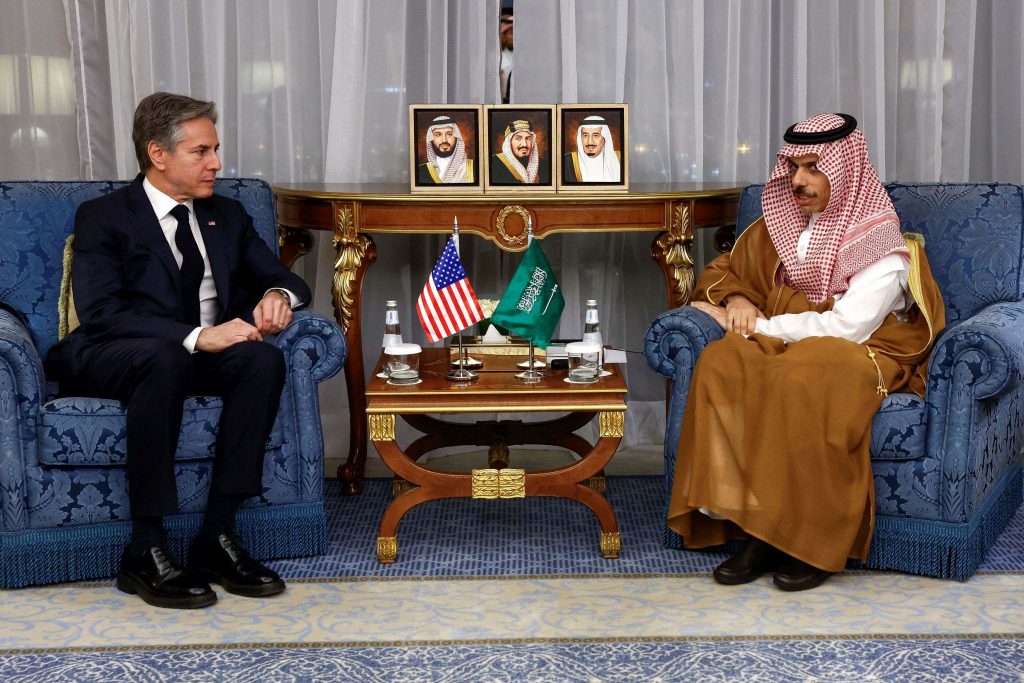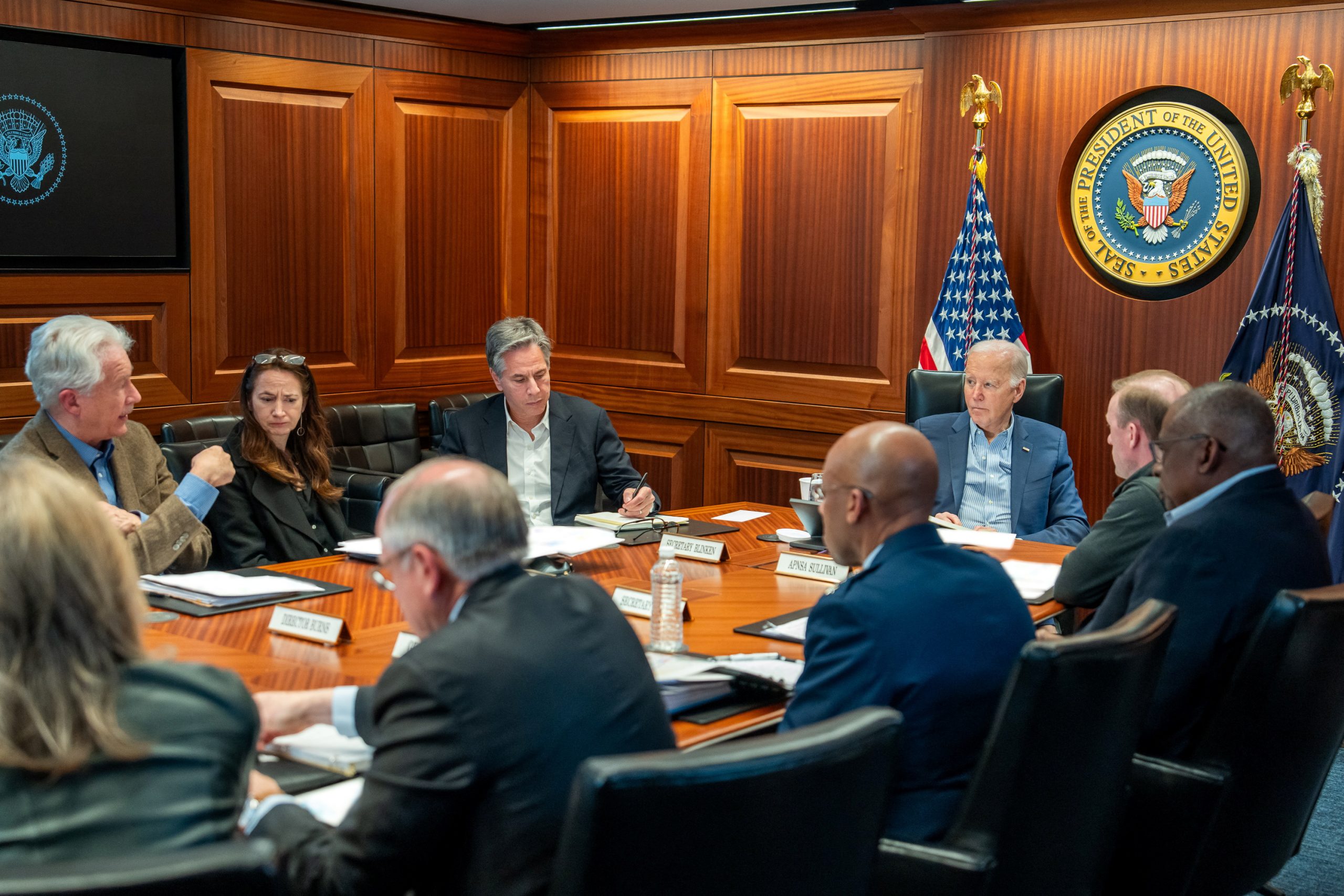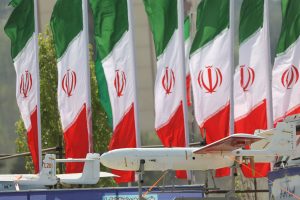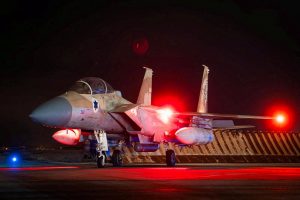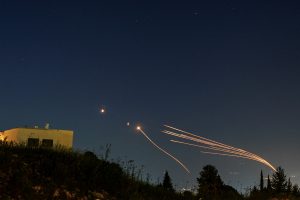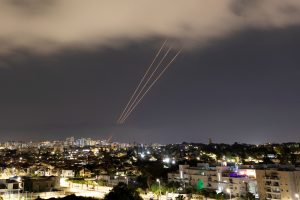WASHINGTON—President Biden and his national-security team watched with mounting alarm on April 13 as monitors in the White House Situation Room showed 30, then 60, then over 100 Iranian ballistic missiles streaking toward Israel .
Iranian cruise missiles and a swarm of drones were already in the air, timed to arrive at the same time as the missiles—a massive barrage that Biden and his aides feared could overwhelm the strengthened defenses they and Israel had spent more than a week preparing.
The scale of Tehran’s first-ever direct attack on Israel matched U.S. spy agencies’ worst-case scenarios, U.S. officials said later. It threatened not only a close U.S. ally, but Biden’s hopes of preventing a six-month Middle East crisis from widening into an all-out regional war.
Assembling in the Situation Room at 5:15 p.m. that Saturday, Biden and his aides couldn’t be sure that Israel’s antimissile systems, reinforced by the U.S. military’s antimissile and counterdrone deployments in the previous 10 days, would block nearly 99% of Iran’s salvo.
“The results of the defenses,” a senior Biden administration official in the Situation Room that day said, “were unclear until all was said and done.”
The agonizing wait during the Iranian barrage was among the tense moments in a 19-day crisis for Biden and his national-security team, one where they often found themselves uninformed or uncertain about what both Israel and Iran were planning at critical times.
It began with a go-it-alone attack in which the Israelis launched a bold strike at Iranian officers in Damascus without any consultation with the U.S. It ended after a coalition of U.S., European and Arab militaries helped blunt the Iranian attack and Israel appeared to heed the American calls for restraint.
Death in Damascus
The crisis erupted on April 1, when Israeli weapons slammed into a building in Syria’s capital Damascus, killing senior Iranian military leaders, including Gen. Mohammad Reza Zahedi, an important figure who oversaw Iran’s paramilitary operations in Syria and Lebanon for the Islamic Revolutionary Guard Corps’ Quds Force.
Just minutes before the strike, an Israeli official alerted his U.S. counterpart that it was under way. But the heads up didn’t include any information about who was being targeted or the location being struck, U.S. officials said.

A person looks at a vehicle where employees from the World Central Kitchen (WCK), including foreigners, were killed in an Israeli airstrike, according to the NGO as the Israeli military said it was conducting a thorough review at the highest levels to understand the circumstances of this “tragic” incident, Deir Al-Balah, in the central Gaza, Strip April 2, 2024. REUTERS/Ahmed Zakot
The White House soon learned of another unexpected Israeli attack that occurred the same day as the Damascus strike: An Israeli drone strike against an aid convoy in Gaza killed seven workers from celebrity chef José Andrés’ World Central Kitchen charity.
Shortly after the Damascus strike, Israeli Ambassador Michael Herzog and the Israeli defense attaché were at the White House as national security adviser Jake Sullivan and other top White House aides held a video teleconference with Israeli officials. In a side conversation, Herzog explained that Israel had targeted Zahedi and other senior Iranian officers, U.S. officials said.
The attack ‘will not remain without answer’
As officials in Washington and Israel awaited Tehran’s response, few Israeli or U.S. officials anticipated that it would attack Israel directly, something it had never done before.
American officials fretted that the Israeli strike could potentially trigger Iranian proxy attacks against U.S. positions in Iraq and Syria, where about 4,500 American troops and civilians are deployed at bases around the region. U.S. officials speculated that Iran might try to attack an Israel Embassy outside the country in response.
After the Syria airstrike, the Iranians asked Switzerland’s Embassy in Tehran to send the U.S. a written message blaming it for the attack in menacing language, U.S. officials said. Washington denied involvement.
Two days after Israel hit Damascus, Defense Secretary Lloyd Austin expressed frustration in a call with Israeli Defense Minister Yoav Gallant that he hadn’t mentioned plans for the operation, even though Gallant had visited Austin in the Pentagon a week earlier, a U.S. official said.
The loss of the high-ranking IRGC personnel who were well connected with the leadership in Tehran infuriated Iranian officials, who said the building Israel hit was a diplomatic facility, an assertion Israel denied to American officials. After failing to secure a U.N. Security Council condemnation of the Israeli strike, Tehran signaled it would retaliate.
The attack “will not remain without answer,” Iranian President Ebrahim Raisi said on April 3.
U.S.-Israeli ties were at a nadir. In a tense April 4 call, Biden told Israeli Prime Minister Benjamin Netanyahu that international support was plummeting after the World Central Kitchen deaths.
Israel needed to allow more humanitarian aid into Gaza and reduce civilian casualties, and the U.S. would judge Israel by its actions, Biden said, according to officials.
But he also told the Israeli leader that the U.S. had Israel’s back against Iran. He ordered the Pentagon to step up its efforts to protect Israel, and the U.S. military activated highly classified plans for assisting Israel in a crisis.
As Biden hosted the Japanese prime minister at the White House April 10, Austin pulled him aside to get authorization to turn around the USS Carney, a destroyer then heading west toward its home port in Florida. It joined the USS Arleigh Burke, another destroyer, in the eastern Mediterranean, close enough to Israel to track and shoot down incoming missiles with SM-3 interceptors that had never been used to down a ballistic missile in combat.
A team of U.S. military personnel secretly went to Tel Aviv to work out of a missile defense operations center with their Israeli counterparts.
Anticipating Iran would employ drones, a bulked-up force of F-15E jet fighters arrived in the region to help shoot them down. Other F-16s based in the region also participated in the operation. Plans were made for Saudi and Jordanian planes to defend their airspace.
The aircraft carrier USS Eisenhower, already in the Red Sea off the coast of Yemen, was moved closer to Israel so it could be in position to launch jet fighters to intercept any drones launched by the Iran-backed Houthis in Yemen.
Biden’s top aides worked the phones, imploring other governments to tell Iran not to strike. CIA Director William Burns asked intelligence counterparts in Europe, Mideast capitals and Turkey to urge Iran to de-escalate.
‘On the high end’
Even as they watched Iran remove missiles from storage and put them on launchers, the scale of Iran’s attack plan wasn’t immediately clear to U.S. intelligence agencies. Some intelligence reports predicted Iran might only target Israeli diplomatic facilities or other sites outside Israel.
As the days without an Iranian response passed, though, U.S. and Israeli intelligence officials determined that Iran was planning a direct attack on Israeli territory and that it would be massive.
The question was when it would come and what the targets would be.
The top U.S. Middle East commander, Gen. Erik Kurilla, arrived in Israel on April 11, speeding up already-scheduled plans to visit the region because of the looming Iranian attack. Kurilla wanted to stay in Israel through the Iranian attack, but Austin ordered him out, fearing that the U.S. might look complicit in any Israeli response. Kurilla continued to participate in the deliberations from Jordan.
By the time Biden arrived in Rehoboth Beach, Del., in the early evening on Friday, April 12 for the weekend, the Iranian attack plan had come into focus. “We got better, firmer intelligence and information about the specific timing” of Iran’s coming attack, said White House national security spokesman John Kirby.
Biden abruptly returned to the capital Saturday afternoon.
When the attack began Saturday night, U.S. officials in the Situation Room and at the Pentagon tracked the three waves of weapons that left Iranian airspace, crossing Iraq and Jordan, racing toward Israel. Even with the advanced warning they had received, the scale of the barrage was a shock, administration officials said.
“This was on the high end, I think, of what we were—what we were anticipating,” a senior official said.
The more than 150 attack drones that Iran launched first—one of the largest swarms used at one time in combat—would take five to seven hours to reach Israel. Then came more than 30 land-attack cruise missiles with flight times of two to three hours. Last were ballistic missiles that would reach Israel in just a dozen minutes.
The Iranians timed the launches so the weapons would arrive simultaneously, an attempt to overwhelm Israel’s defenses. They avoided civilian targets in favor of military ones, like the Nevatim base in the Negev Desert, where Israel’s advanced F-35 fighters are based.
A patchwork of defense systems sewn together hastily by Kurilla and others in the days before the attack succeeded in defending the most formidable attack Israel had seen in decades. No one had ever tried to intercept so many ballistic missiles at once before. Washington thought its and Israeli forces could handle 50 ballistic missiles, but more than 100 was unknown territory.
Israel’s Arrow system intercepted most of the ballistic missiles, while the two American destroyers in the eastern Mediterranean downed several others. An American Patriot antimissile battery in Erbil, Iraq, intercepted another one.
The lumbering drones, in the meantime, were shot down by a combination of American, British, French and Israeli aircraft.
‘Take the win’
After Israel emerged almost unscathed, the White House shifted from defending its ally to restraining it. About 9 p.m. Washington time on April 13, Biden and Netanyahu held an intense call.
The U.S. president advised Netanyahu, who was with his war cabinet during the call, to think through his next step carefully and to “take the win,” U.S. officials said.
He reminded the Israeli leader that his forces had eliminated Iran’s military commanders for Lebanon and Syria and that Iran’s counterattack had failed.
U.S. officials worried Israel might strike back immediately, and powerfully. Iran was warning it would respond forcefully, which could supercharge the cycle of escalation.
After international condemnation of the World Central Kitchen attack, Israel was now in a different, better place strategically, U.S. officials argued. If it responded rashly, it could once again lose newly regained international support.
Members of Netanyahu’s right-wing coalition government, meanwhile, were demanding quick, massive retaliation. But Netanyahu told ministers from his Likud party that while he was determined to respond to Iran, the action would be “sensible and not something irresponsible.”
Early on April 19, Israel struck back, targeting a single military site in Iran’s Isfahan province . While the attack was narrow, it showed that Israel could overcome Iranian air defenses and strike deep inside its adversary’s territory, an unmistakable warning after Tehran’s failed attack on Israel.
Unlike the Damascus strike that started the crisis 19 days earlier, this time Israel gave the U.S. a few minutes’ advance notice of its limited attack. The White House had, at least for a time, avoided a wider war.
Write to Michael R. Gordon at michael.gordon@wsj.com , Warren P. Strobel at Warren.Strobel@wsj.com and Gordon Lubold at gordon.lubold@wsj.com
Corrections & Amplifications undefined President Biden abruptly returned to Washington, D.C., from Delaware the afternoon of Saturday April 13. An earlier version of this article incorrectly said he made the return trip Friday night. The USS Carney was heading west on April 10. An earlier version of this article incorrectly said it was heading east. (Corrected on April 21)
